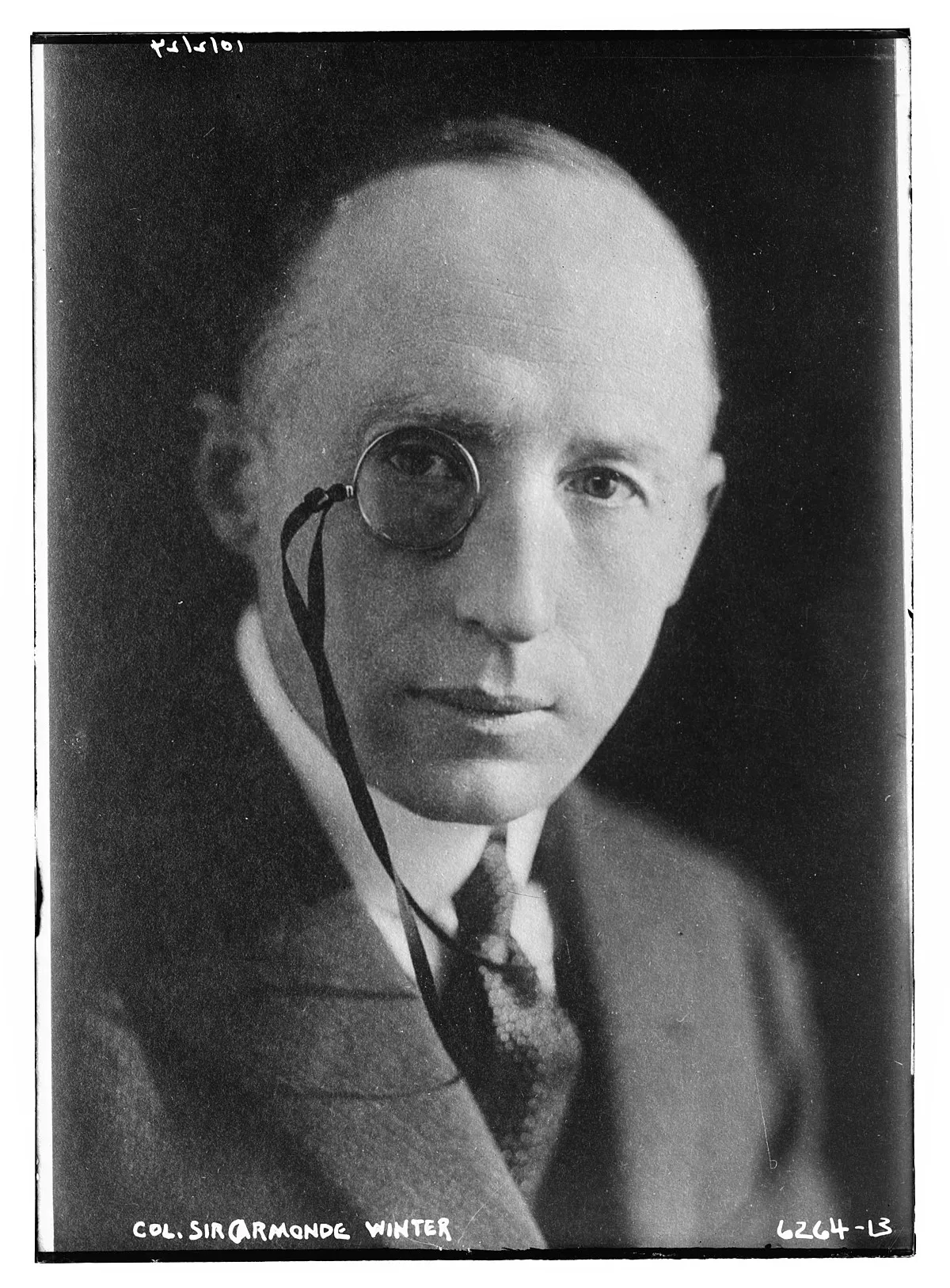 1.
1. Brigadier-General Sir Ormonde de l'Epee Winter, KBE, CB, CMG, DSO, was a British Army officer and author who, after service in the First World War, was responsible for intelligence operations in Ireland during the Anglo-Irish War.

 1.
1. Brigadier-General Sir Ormonde de l'Epee Winter, KBE, CB, CMG, DSO, was a British Army officer and author who, after service in the First World War, was responsible for intelligence operations in Ireland during the Anglo-Irish War.
Ormonde Winter later joined the British Fascists and fought for the Finnish Army in the Winter War.
Ormonde Winter was educated at Churchbury House, Great Morden, and later at Cheltenham College, before joining the British Army.
Ormonde Winter was a Royal Artillery officer and served in India with the 67th Battery at Peshawar and in Ireland with the 131st Battery in County Kildare prior to the First World War.
Ormonde Winter gained notoriety for an incident in Bedfordshire in 1904, where he and another officer confronted a group of youths who had been harassing them whilst boating, Winter killing one with a single blow from an oar when the boy attacked him with a wooden club.
Subsequently charged with manslaughter, Ormonde Winter was acquitted by the jury on the grounds of self-defence.
Ormonde Winter first saw action as an artillery officer during the Gallipoli campaign, arriving on W beach, Lancashire Landing, on 29 April 1915 after surviving an attack on his transport, the SS Monitor, from an Ottoman torpedo boat before arriving at the front.
Ormonde Winter later remarked that he enjoyed every minute of his service at Gallipoli.
Ormonde Winter would take part in the battles for Messines Ridge on 7 June 1917 and afterwards Passchendaele.
Ormonde Winter originally was housed in a lodge outside Dublin Castle and remarked on his unconventional introduction to Ireland when his mess steward shot himself on his first night.
Ormonde Winter's detractors claimed him to be obsessed with cloak and dagger operations, at one point donning a disguise to personally seize part of IRA funds.
In December 1920, Ormonde Winter took charge of the 90-strong Dublin District Intelligence Service, known as the "Cairo Gang", possibly named after their meeting place the Cairo Cafe or possibly due to many having served in the Middle East, uniting military and police intelligence for the first time.
One informer for Ormonde Winter was Vincent Fovargue, an intelligence officer in the Dublin IRA who provided information which led to the arrest of several IRA members.
On 31 January 1921, Ormonde Winter staged a fake escape of Fovargue from custody whilst on a lorry taking him to Kilmainham Gaol.
Ormonde Winter's body was eventually found upon a golf course in Staines with the traditional message 'Spies and traitors beware'.
Ormonde Winter claimed to have recruited at least three leading IRA members as informers and many others from lesser ranks.
Ormonde Winter met David Lloyd George, briefing him on the nature of the conflict.
Major General Hugh Tudor attempted to have Ormonde Winter appointed as deputy chief of police for Palestine, alongside many other British veterans of the Irish conflict recruited into the Palestine Gendarmerie.
However, the War Office vetoed his request, Ormonde Winter having been resented by General Sir Nevil Macready and others over his attaining police primacy in intelligence matters over their Army preferred candidate, Lt-Col Walter Wilson.
Ormonde Winter was appointed head of the organisation's intelligence section, taking over from another British secret agent, Maxwell Knight, but eventually did not take up the post, filled by Lieutenant-Colonel Bramley who kept Knight on as his deputy.
Ormonde Winter was honoured for his service with certificates that can be seen in his personal collection in the Imperial War Museum.
Ormonde Winter spoke five Slavic languages and was a chain smoker.
Ormonde Winter died peacefully in 1962 aged 87, his obituary reading that he feared neither God nor man.
Brigadier-General Ormonde Winter appears in the RTE miniseries Resistance, played by Paul Ritter.